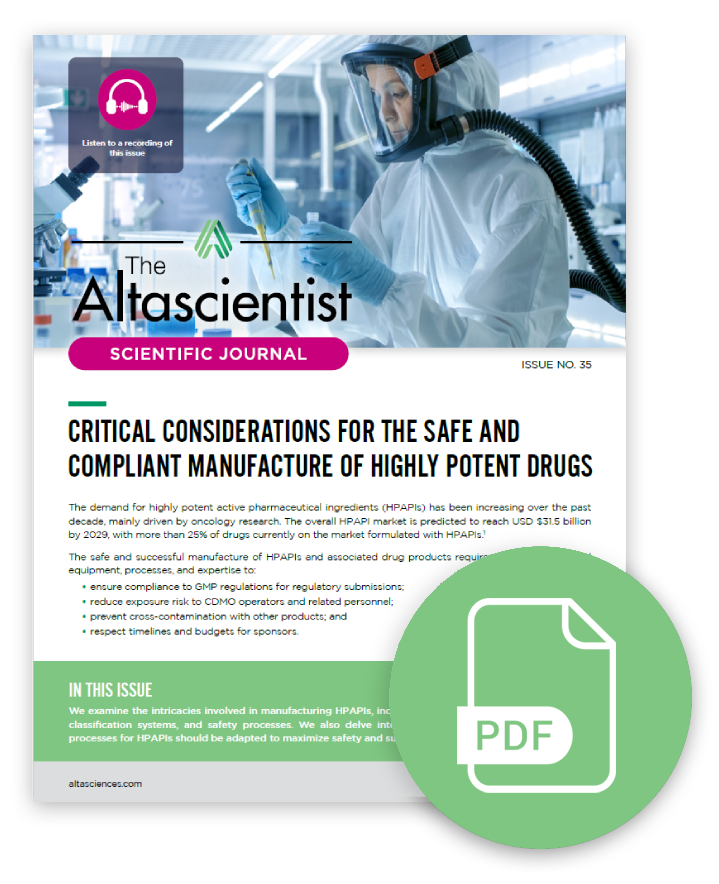ISSUE NO. 35 — Critical Considerations for the Safe and Compliant Manufacture of Highly Potent Drugs

In recent years, advancements in oncological research have fueled a surge in demand for highly potent active pharmaceutical ingredients (HPAPIs). So much so that the HPAPI market is estimated to reach USD 31.5 billion by 2029.
Thousands of HPAPIs are currently in development that promise lower dose requirements, enhanced efficacy, improved patient compliance, and fewer side effects.
Manufacturing these drug products involves expert specialization and careful consideration to ensure that GMP regulations for drug submissions are met, the risk of exposure for CDMO-related personnel is reduced, and every effort is made to prevent cross-contamination.
In Issue 35 of The Altascientist, we explore the intricacies and critical considerations for the safe and compliant manufacture of highly potent drugs, in particular HPAPIs, which include:
- categorization of HPAPI potency;
- classification of exposure potential;
- appropriate containment strategies;
- engineering controls and waste management practices; and
- global regulatory requirements.
What Defines High Potency for an API?
The classification for what constitutes high potency for an API varies depending on the source. However, it is generally defined by one or more of the following: biological activity at approximately 150 μg/kg of body weight or below in humans; hormones; certain steroids; novel compounds with unknown toxicity or potency including biological activity; occupational exposure limits (OELs) at or below 10 μg/m of air as an eight-hour time-weighted average; high selectivity and/or with and potential to cause cancer, mutations, development effects, or reproductive toxicity at low doses. New APIs undergo robust evaluation to determine their classification level for safe handling procedures and clearance limits.
Explore all issues of The Altascientist in our Resource Center. And don’t forget to subscribe to The Altascientist: Audiobooks on Spotify, Apple Podcasts, or wherever you get your audio content.